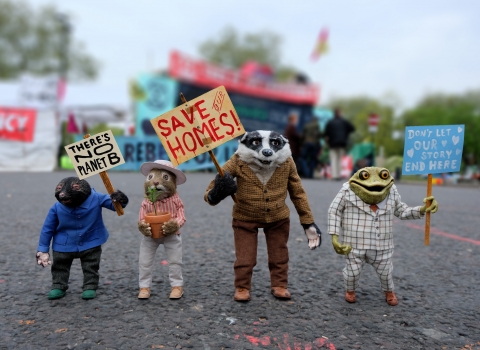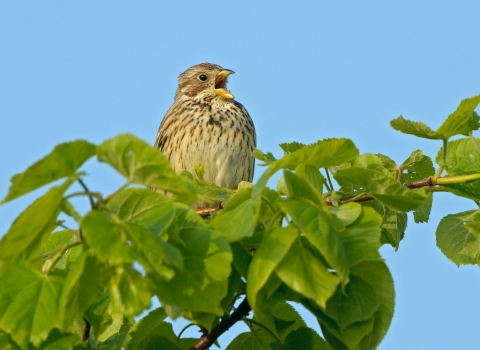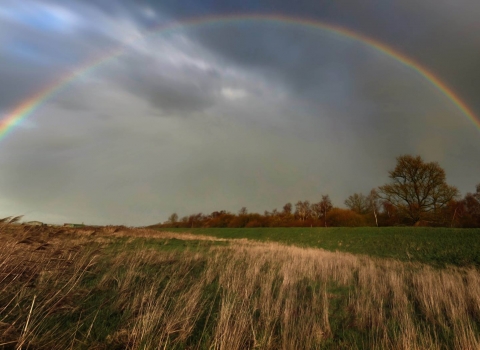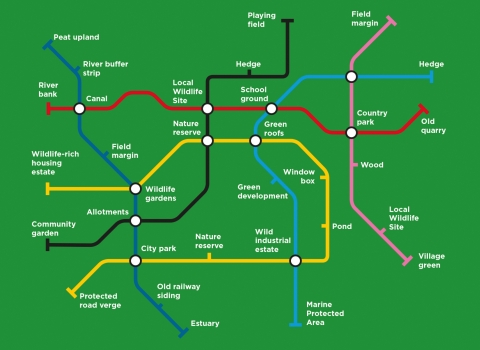This Wildlife Trust is science-led, evidence-based and pragmatic: we support what works for wildlife, and we fight to prevent what damages wildlife.
That leads us to challenge the Oxford-Cambridge expressway and the target for a million new houses, and to defeat plans for a road through our nature reserve at Godmanchester, a new settlement next to Castor Hanglands NNR, or new holiday chalets in the ancient woodland at Fineshade, Northants. It also means that we will work with developers who want to do things right: Cambourne, Trumpington Meadows and Lilbourne Meadows are better for wildlife now than before the development happened.
More uncomfortable, but I think the right approach: at times, we will also work with developers whose plans we have opposed, if they get planning permission despite our efforts to prevent it: once a damaging development is approved, our job is to minimise its impact on wildlife.
Our changing role
Twenty years ago, the Wildlife Trusts analysed our ‘niche’ in relation to climate change: where would our limited resources make the biggest difference? We concluded it was adaptation – helping wildlife cope with the inevitable change which was already locked into the climate system. We proposed Living Landscapes as the mechanism, and now we’re championing a Nature Recovery Network in the next Environment Act to deliver it.
This year, national and local government have woken up to the scale of the climate emergency. The added pressure from Extinction Rebellion is encouraging government to take biodiversity loss seriously, too. Two aspects of this have the potential to change the Trust’s role significantly.
We can make sure it’s the right habitat in the right place, and that it’s properly managed
We’re expecting the new Environment Act to require all new development to provide at least 10% ‘biodiversity net gain’ – so, any habitat which is destroyed or damaged must be more than replaced. We believe the right figure is at least 20% and will be pressing this with local planning authorities. And in some cases, such as ancient woodland or peatland, replacement is clearly impossible, so we must fight for complete protection. But, given the scale of development we are facing (even without the million homes target), ‘net gain’ will mean considerable areas of habitat creation in the coming decades. We can make sure it’s the right habitat in the right place, and that it’s properly managed.
So, you can expect the Trust to be working with local councils and developers in future, to deliver our long-term aim of a Living Landscape, through a Nature Recovery Network, and using ‘biodiversity net gain’ as one mechanism to help to pay for it. I think this is a more practical way forward than always objecting from the sidelines.
Zero carbon targets
The other change to which we need to respond is the imperative to reduce future carbon emissions rapidly. This has become so urgent I don’t think we can leave mitigation to others and say that our role is simply helping wildlife to adapt. We will support sustainable transport and urge companies and individuals to reduce their CO2 emissions. But on current evidence, the UK will not be carbon neutral in the next decade: we will continue to burn fossil fuels, to drive petrol vehicles, and to build new homes. Yet the target of net zero carbon by 2025 or 2030 is real, and will need more action.
The sooner we restore wetlands in the Great Fen, the more CO2 we save from oxidation of the peat
The Trust is pressing for the whole Oxford-Cambridge arc to be ‘zero carbon’, but we need to face up to what that means. Building materials and private transport will remain high-carbon for at least 10-20 years. That will exacerbate climate change unless we do something about it. Nature has to be part of the solution, and the Trust is well placed to contribute. Some of our most ambitious plans for wildlife are also brilliant at reducing CO2 emissions. For 20 years we’ve aimed to link together the ancient bluebell woods of the West Cambridgeshire Hundreds, and to join up our chain of woods near Oundle. We’ve made some progress. But if we were to help parts of industry to offset their CO2 emissions, we would have the resources to link those woods much sooner. And more, bigger and better connected woods will also help species respond to climate change.
The opportunity is larger still in the Great Fen: the sooner we restore wetlands there, the more CO2 we save from oxidation of the peat. And we are pioneering novel farming techniques which could allow our agricultural neighbours to save their peat soils while still growing crops: the fen basin is responsible for over a third of the total CO2 emissions from UK agriculture, so this is potentially one of the biggest differences we can make. Again, getting it right for carbon in the Fens will also help arrest species declines and create larger and more resilient habitats for wildlife.
So, the Trust is exploring our potential role in offsetting the unavoidable emissions from industry and individuals. I think this is the right approach: offsetting will speed the reduction in total CO2 emissions.





